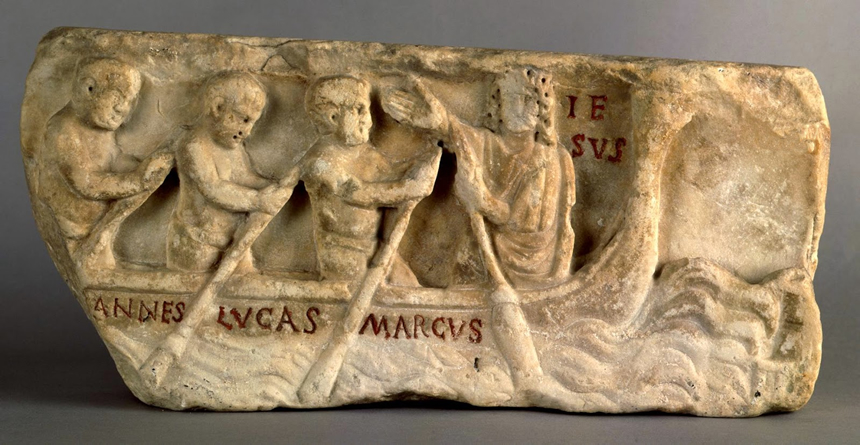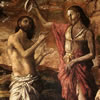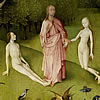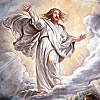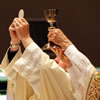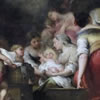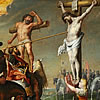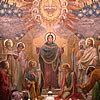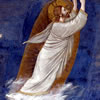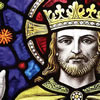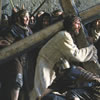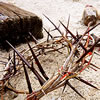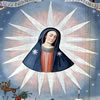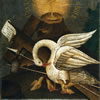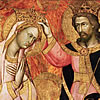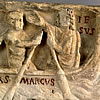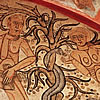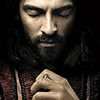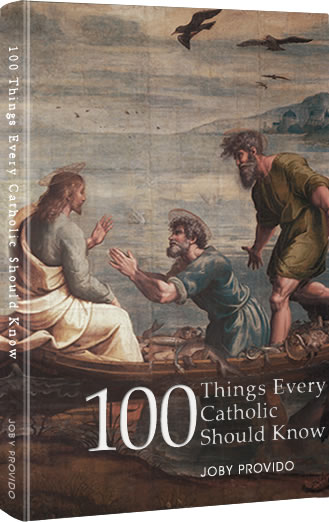Metaphors of the Church
The Church is depicted as barque, a sheepfold, a cultivated vineyard, the building of God, and the bride of Christ. Oftentimes metaphors make it easier to understand a concept. Christ did it frequently with ideas he needed to explain in a way his listeners could understand. Interestingly, the Church is one of these concepts that have several metaphors for us to get a better grasp of what she is.
A barque
In the story of the Great Flood in Genesis, only those who were in Noah’s Ark were saved from death. It foreshadows the Church as an Ark that “navigates safely in this world” to bring its passengers to a destination where death does not exist – which we understand as salvation. (CCC §845) It shouldn’t be startling that a dove heralds new life in the Genesis story, while a dove heralds our new life in Christ, during his baptism. (Genesis 8, Matthew 3:16)
The boat is an early Christian symbol and found its way into church architecture. The central aisle of a church, for example, is called the nave. It comes from the Latin “navis”, which mean ship. Likewise, the vaulted ceilings of gothic churches are shaped as a ship’s keel.
Many episodes in Christ’s life are linked with boats where we can find some meaning of the Church in it. For example, it is from an episode in Peter’s boat that Christ promised Peter would no longer catch fish, but catch men. (Luke 5:1-10) And, for as long as Christ is in that boat, he wouldn’t allow it to sink (Mark 4:35-40), just like he promised “the gates of the netherworld” will not prevail against the Church. (Matthew 16:18) Scholars like to go a bit further and liken the Church to Peter’s boat because Christ would preach from the boat of Peter (Luke 5:3), and we revel in the thought that Christ’s words are still preached from that same boat today.
A sheepfold
If we examine John 10:1-16, (reading it is highly recommended) Jesus likens himself to a Good Shepherd, and his flock a sheepfold. (CCC §754) He says he is the gate for it is through him his sheep enter. For Catholics, this is very metaphoric because we enter into the Church through baptism wherein we die and resurrect with Christ.
Shepherds would usually sleep in the opening of the corral and act as a gate. Wolves are afraid to go near, while the sheep inside don’t venture out knowing the Shepherd protects them. Jesus says his flock “listen to his voice” and leads them to green pastures to graze and feed, and back into the corral for safety. As part of the Church, therefore, we are meant to follow Christ – be his disciples. So it is within the Church we find safety from error.
Sometimes a shepherd breaks a leg of a stubborn sheep that ventures too far away. He carries that particular sheep around his neck until the leg heals. By that time the sheep looks for the scent of the shepherd and won’t leave by his side. Maybe when we complain about our miseries, Christ is breaking our leg to bring him closer to us.
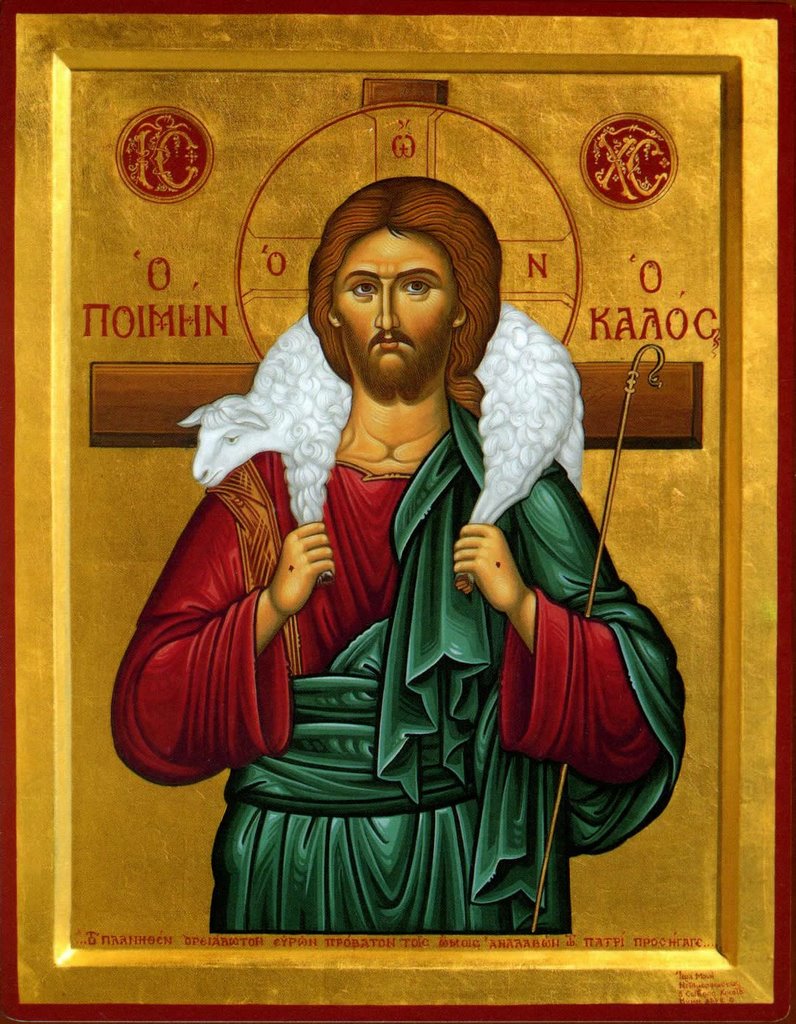
This metaphor finds itself in the vestments of our bishops and Pope. The bishop’s staff is meant to symbolize his role as a shepherd. The pallium around the Pope’s neck is woven from white lamb’s wool as if he were carrying a lamb. It is a symbol of his role as Good Shepherd entrusted to him by Christ.
A cultivated vineyard
The Parable of the Tenants (it would be good to read Matthew 21:33-46) likens the Church to a cultivated vineyard.(CCC §755) In that parable, the vineyard has a hedge which means it has boundaries (just like the sheepfold). Tenants are taking care of it but beat every servant that the owner sends to obtain the fruits of the vineyard. He finally sends his son thinking the tenants will listen to him, but they kill him nevertheless.
The Old Testament is full of verses about bearing fruit for example: “You shall bring the very first of the first fruits of your soil into the house of the Lord your God” (Exodus 34:26) Isaiah 5:1-7 foreshadows this even to the point of literally saying: “the vineyard of the Lord of hosts is the house of Israel.” In the New Testament, Saint Paul refers to as Christ as the first fruits of those asleep that have been raised from the dead. (1 Corinthians 15:20-28). So, Israel is this vineyard and every prophet – including Christ – was killed by the religious rulers.
While parables are always directed to someone or some group (this one was directed at the Pharisees), it becomes clearer to the Apostles, when during the Last Supper Jesus says, “I am the true vine and my Father is the vine grower... I am the vine, you are the branches.” (John 15:1,5)
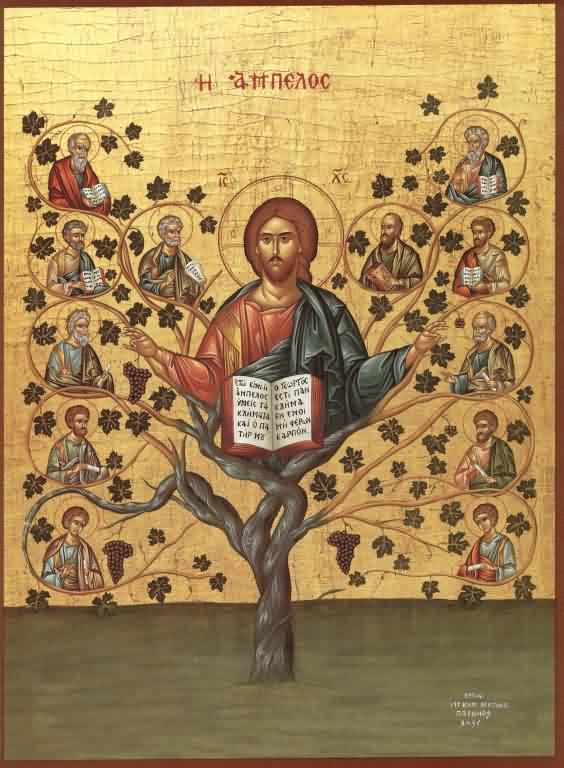
So just like King David who brought the tribes of Israel together under one kingdom – one vineyard – (the “house of Israel”), Jesus – who is a king in the Davidic Kingdom – brings together all “tribes” all over the earth in an expanded vineyard: the Church.
The building of God
After realizing the Ark of the Covenant, where the presence of God dwelt, was housed under a tent, King David promised to build God a house. (2 Samuel 7) He didn’t survive to see it, but it was his son King Solomon who finished it. So there in Jerusalem, a beautiful temple stood where sacrifices were made where God dwelt.
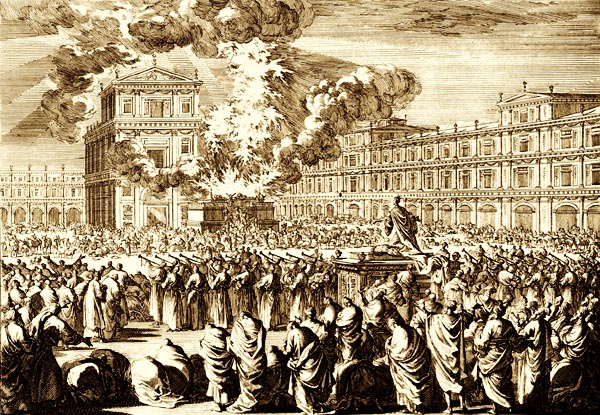
Many years later Jesus drove out money-changers from that same Temple, and when the temple managers asked by what authority he does this, he answers: “Destroy this temple and in three days I will raise it up.” John, who is telling this story, is quick to say, “But he was speaking about the temple of his body.” (John 2:13-21)
After his death, Christ sent his spirit to the assembly of people – the Church – that he had formed on the foundation of the Apostles. From this, it made sense to the Church that she is the “mystical body of Christ” (CCC §788, 797). The simple logic behind this is that there is only one soul for one body, so if the Holy Spirit – the Spirit of Christ – is the same spirit of the Church, then the Church must be the Christ himself.
Saint Paul expresses this within a few years after Christ’s resurrection: “As a body is one though it has many parts, and all the parts of the body, though many, are one body, so also Christ. For in one Spirit we were all baptized into one body, whether Jews or Greeks, slaves or free persons, and we were all given to drink of one Spirit” (1 Corinthians 12:12-13) This is supported by what Saint Peter says about the Church: “and, like living stones, let yourselves be built into a spiritual house to be a holy priesthood to offer spiritual sacrifices acceptable to God through Jesus Christ.” (1 Peter 2:5)
So the Church is a building of God (CCC §756) but this time no longer built of stone, but of us who are “living stone”. First-century Jews would not have missed the importance of Simon when he was renamed “Peter” or “this rock I will build my church” because the great Temple in Jerusalem was built upon a rock! It makes clear what Christ says about destroying the Temple, and rebuilding it with his mystical body – the new Temple, the building of God. And just like the old Temple, it is in this living building of God where we continue the sacrifice that is acceptable to God when we offer him Christ in every mass.
The Bride of Christ
The Church Fathers saw that the Church came from the wound on the side of Christ just as Eve came from the side of Adam. (Lumen Gentium 3, Sacrosanctum Concilium 5)
In the creation story (Genesis 2:21-24) God wanted to create a bride for Adam. So he put him in a deep sleep, opened his side where he took out a rib, and made the first woman. And Adam exclaimed, “This one, at last, is bone of my bones, and flesh of my flesh...” Because woman came from the side of man, “that is why... the two of them become one flesh.” (in matrimony)
When Christ died but still hung on the cross, a soldier pierced his side with a lance from where blood and water flowed out. Later on, Christ would resurrect as if his death was a “deep” sleep. It is like the creation of Eve story, but this time blood and water is a symbol of the Church, Christ’s bride, which is one flesh with him. (CCC §766) Saint Ambrose expressed this as: “the last Adam is Christ and Christ’s rib is the life of the Church. Therefore we are members of his Body, of his flesh, and of his bones.” (Expositio Evanagelii Secundum Lucam 2) This, of course, is the same metaphor as the mystical body wherein Christ and his Church are one thing, and the vine and branches for the branches cannot survive if it is not one with the vine.
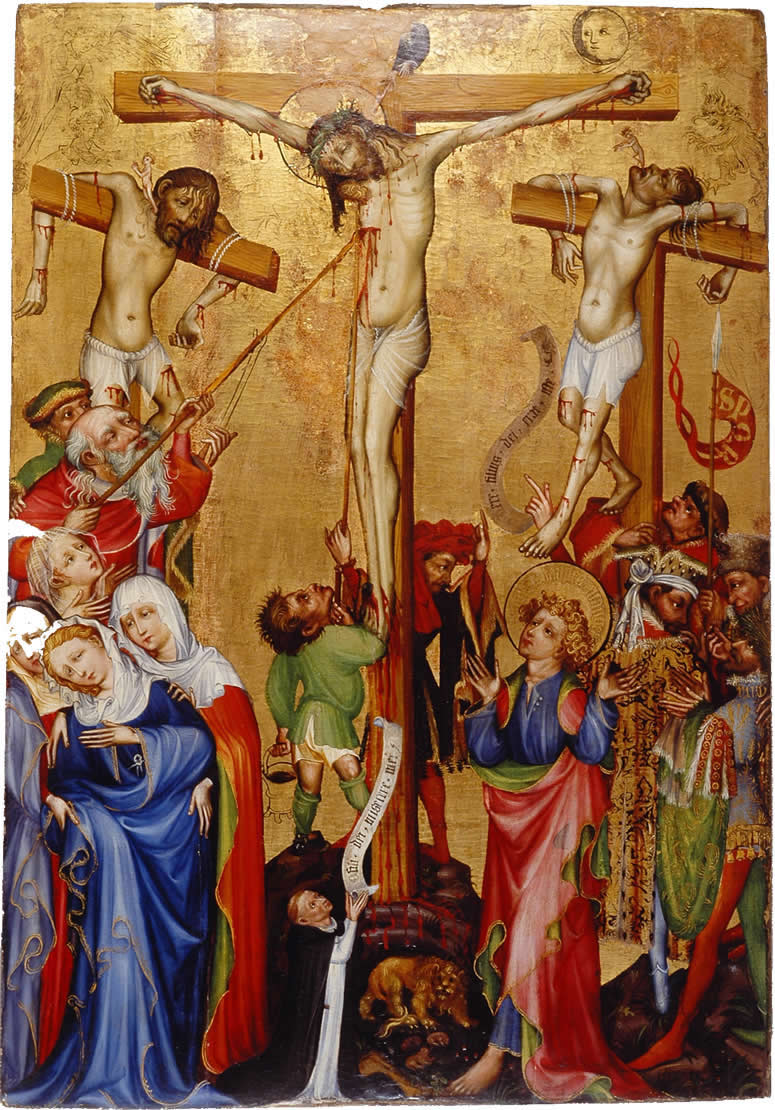
The metaphor becomes stronger when on Pentecost, a “strong wind” breathed life into the body of the Church, the same way God blew into the nostrils of Adam to give him life. (Genesis 2:7, Acts 2:1-13)
It is no coincidence that God would continually reveal himself as a bridegroom in the Old Testament, and why Christ would refer to him as a bridegroom in the New Testament. The Song of Songs tells of a bridegroom and a bride yearning for union, while Revelation 21 tells the end of that song where Christ is that bridegroom and the New Jerusalem, the Church, is his bride. (CCC §757, 765, 796)
The word bride means “vessel of life”, and so we come back full circle to the barque metaphor that brings its passengers to everlasting life.
Conclusion
The Church is more than a “Jesus Club”. As we can see it has been planned since the moment of creation through the foreshadowing of Noah’s Ark and Eve’s creation.
So it isn’t something we make, but whose existence is mystically in union with Christ himself. Saint Joan of Arc said it well: “About Jesus Christ and the Church, I simply know they’re just one thing, and we shouldn’t complicate the matter.”
As a reflection of being part of the Church, we should ask ourselves if we recognize Christ’s voice and follow him as disciples do. As a member if his mystical body, what is our role, and how are we fulfilling it to make the Church stronger and healthier? As a bride of Christ are we truly in union with him or just mimicking the part? As a passenger on Peter’s boat, are we part taking of the sacraments that feed our spiritual life? The Church is much more than an assembly: it is Christ, and we are in Christ.

A Sky Full of Stars
Know Our Lady through her Titles in the Litany
The Church helps us understand who Mary is by honoring her with different titles in the Litany of the Blessed Virgin Mary. Unfortunately, over time and difference of culture, we might not grasp what it is the Church is ascribing to her and lose that opportinity to get to know her.
In A Sky Full of Stars, each title of the Litany is explained so we get know Mary more and fall in love with her all over again.
Get your copy now either in Hardbound, Paperback, or Kindle
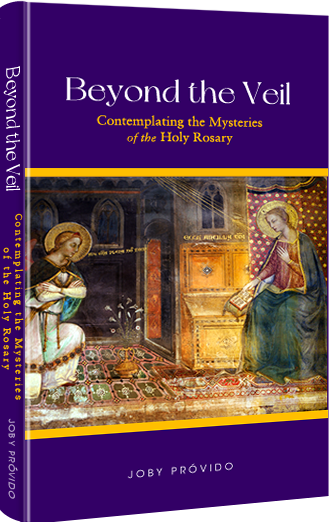
Beyond the Veil
Contemplating the Mysteries of the Holy Rosary
Prayer giants like Pope St. John Paul II, Pope Paul VI, Bl. Archbishop Fulton Sheen, and Bishop Robert Baron advocate that we contemplate on the mysteries of the rosary while we say the vocal prayers. Unfortunately, there are not many books that teach us how to do this. Beyond the Veil comes to the rescue by suggesting seven ways we can pray the rosary the way it was intended.
The larger part of the book offers mental images for each of the mysteries we can use in our contemplation, for how can we imagine the scenes in the rosary if we don't know about them?
Get your copy now either in Hardbound, Paperback, or Kindle
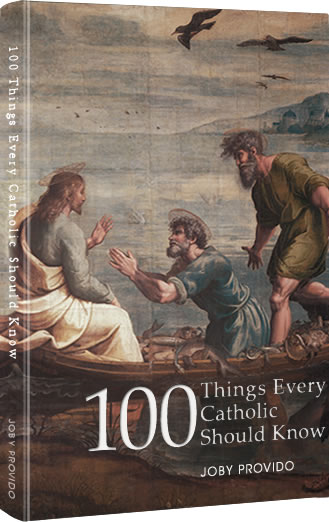
100 Things Every Catholic Should Know
Whether or not you are new to the Catholic Church, or struggling, or lapsed, or dynamically involved, this book will enlighten you with the essentials of the Faith that have been handed down to us by the apostles.
Each of the 100 topics is easy to read and distilled into bite-sized portions. Through cross-referencing, the book also shows how the topics are interrelated. Those who are new to the Faith will find this book an edifying handy reference, and those who have simply forgotten will find it a great review material that might spark a new love for God and religion.
Get your copy now either in Hardbound, Paperback, or Kindle
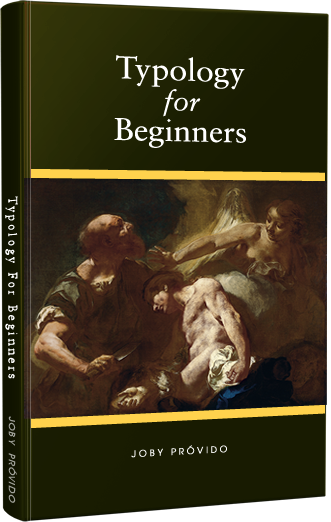
Typology for Beginners
A Catholic Perspective on understanding the New Testament through the Old Testament
First-century Jews converted to Christianity in droves because of the way the New Testament was written to show Jesus was the Messiah promised by the Old Testament. We also learn about how Mary is the New Eve and the Ark of the Covenant in the way the writers portray her.
Through typology, the patterns that connect the Old and New Testaments make the Bible stories more accessible so that one becomes excited to read Sacred Scripture again.
Get your copy now either in Hardbound, Paperback, or Kindle


